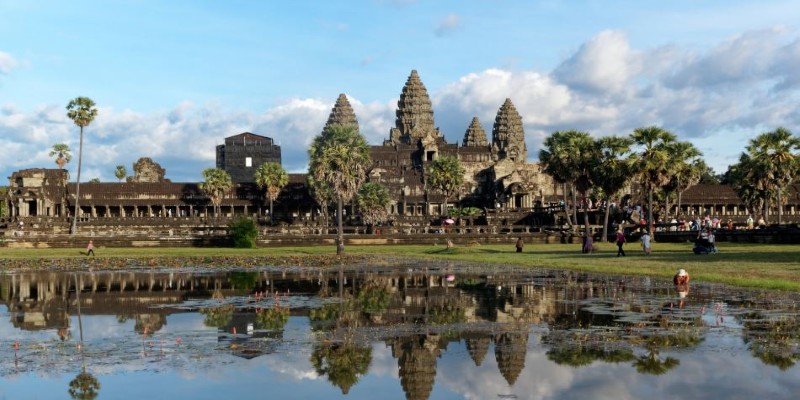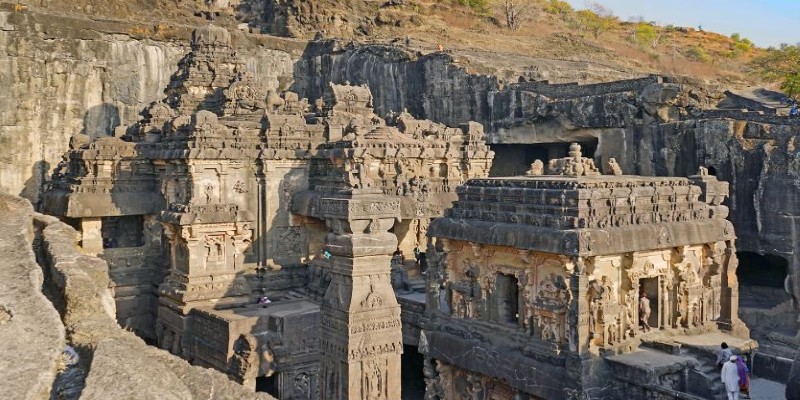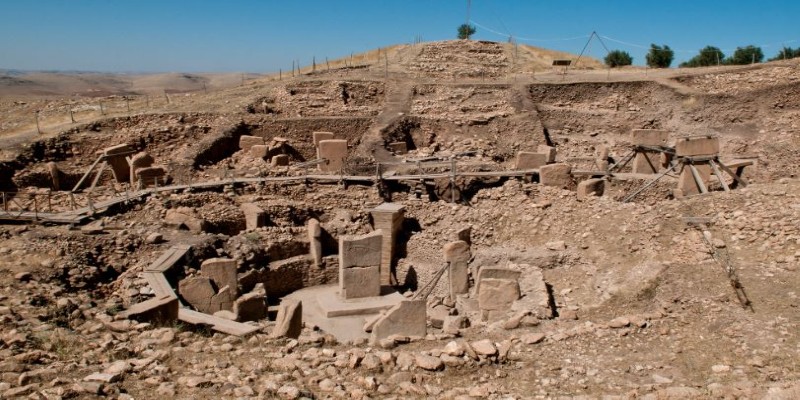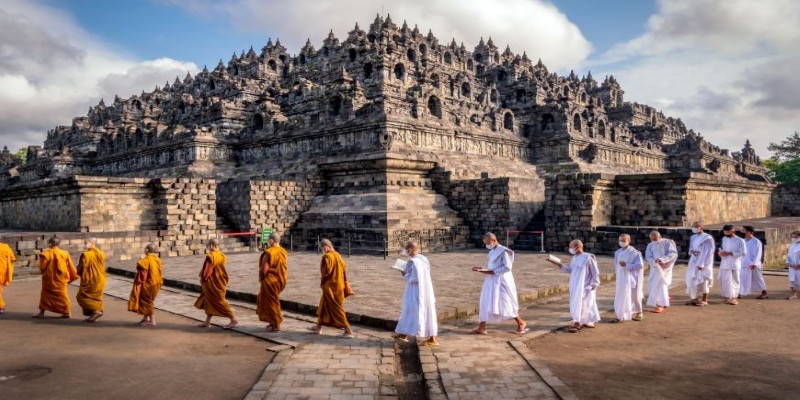7 Ancient Temples Shrouded In Mystery
Author: Tooba
Have you ever wondered what secrets lie behind the ancient stones of temples that have stood for millennia? Across the globe, ancient temples captivate us with their enigmatic histories, intricate designs, and legends steeped in mystery. Some were built to honour gods, others to chart celestial movements, and a few remain puzzles that modern science has yet to decipher fully.
Here are seven ancient temples shrouded in mystery that intrigue explorers and scholars alike.
1. Angkor Wat, Cambodia
Angkor Wat is not just a temple; it's the largest religious monument in the world. Initially built in the 12th century as a Hindu temple dedicated to Vishnu, it later transformed into a Buddhist temple.

Why It’s Mysterious:
The alignment of Angkor Wat with celestial events is astonishing. Scholars believe it mirrors Hindu cosmology, which maps the universe in stone.
The intricate bas-reliefs tell stories of ancient epics, but some interpretations remain debated among historians.
Its construction remains a marvel. How did ancient Khmer engineers move and carve the massive sandstone blocks with such precision, especially without modern tools?
Fun Fact: Angkor Wat’s towers symbolize Mount Meru, the mythical home of the gods in Hindu belief. The entire complex is surrounded by a massive moat, representing the cosmic ocean.
2. Machu Picchu, Peru
Nestled high in the Andes Mountains, Machu Picchu is an Incan citadel that continues to mystify historians. While not a temple in the traditional sense, its sacred areas reflect deep spiritual significance.

Why It’s Mysterious:
The purpose of Machu Picchu is unclear. Was it a royal estate, a religious site, or an astronomical observatory?
Its precise stonework fits so tightly that even a knife blade cannot slip between the stones—a feat difficult to replicate today.
How the Incas transported heavy stones to the site without the wheel or iron tools remains a mystery, especially considering the site’s remote location.
Fun Fact: Machu Picchu was unknown to the outside world until American historian Hiram Bingham rediscovered it in 1911. Today, it's a UNESCO World Heritage Site and one of the World's New Seven Wonders.
3. Stonehenge, England
A few ancient sites, like Stonehenge, capture the imagination. This prehistoric monument in England has puzzled researchers for centuries.
Why It’s Mysterious:
The purpose of Stonehenge is widely debated. Was it an astronomical calendar, a burial site, or a place of healing?
Some stones were transported from over 150 miles away. How this was achieved without advanced technology is a question that continues to baffle experts.
Its alignment with the solstices suggests a deep understanding of astronomy by its creators, highlighting the sophistication of Neolithic society.
Fun Fact: Recent studies suggest Stonehenge may have been part of a more extensive network of ceremonial sites interconnected across ancient Britain.
4. Kailasa Temple, Ellora, India
Carved out of a single rock, the Kailasa Temple at Ellora is a masterpiece of ancient Indian architecture and engineering.

Why It’s Mysterious:
This massive temple was carved top-down from a single volcanic rock, an unparalleled feat of craftsmanship.
Historians are unsure how long it took to build, with estimates ranging from 18 to 30 years. The sheer scale and precision of the carvings remain awe-inspiring.
The detailed carvings depicting gods, mythical creatures, and scenes from Indian epics display an advanced understanding of art and engineering.
Fun Fact: The Kailasa Temple is dedicated to Lord Shiva and is part of the Ellora Caves, a UNESCO World Heritage Site with 34 rock-cut temples and monasteries.
5. Gobekli Tepe, Turkey
Known as the world’s oldest temple, Gobekli Tepe in southeastern Turkey predates Stonehenge by 6,000 years. Its discovery has rewritten our understanding of human history.

Why It’s Mysterious:
Built around 9600 BCE, Gobekli Tepe challenges the notion that organized religion and complex societies only developed after agriculture.
The purpose of Gobekli Tepe remains speculative. Was it a religious site, a gathering place, or something else entirely? Its circular structures and carved pillars hint at profound ritual significance.
The carvings of animals and abstract symbols may represent a lost language or code, offering tantalizing clues about the beliefs of its builders.
Fun Fact: Gobekli Tepe was deliberately buried around 8,000 BCE, and archaeologists are still unsure why. Its intentional burial preserved it remarkably well for millennia.
6. Chichen Itza, Mexico
Once a major Mayan city, Chichen Itza is home to the awe-inspiring Temple of Kukulkan, also known as El Castillo.
Why It’s Mysterious:
During the spring and autumn equinoxes, a shadow resembling a serpent slithers down the pyramid’s staircase—a testament to the Mayans’ astronomical expertise and engineering skills.
The temple's acoustics are uncanny. When you clap at its base, the sound resembles the chirp of the sacred quetzal bird, a feature believed to honor the Mayan rain god.
The purpose of the Sacred Cenote, a nearby sinkhole, is debated. Was it used for rituals, sacrifices, or both? Excavations have revealed artefacts and human remains, hinting at its ritual significance.
Fun Fact: Chichen Itza’s name means “At the Mouth of the Well of the Itza,” referring to the Sacred Cenote and its central role in Mayan spirituality.
7. Borobudur, Indonesia

Rising majestically in central Java, Borobudur is the world's largest Buddhist temple. Constructed in the 9th century, it symbolizes devotion and mystery.
Why It’s Mysterious:
Borobudur’s design mimics a mandala, symbolizing the universe in Buddhist cosmology. Its tiered structure guides pilgrims on a spiritual journey toward enlightenment.
It was abandoned for centuries and rediscovered under layers of volcanic ash in the 19th century. Why it was abandoned remains unclear, though some theories point to volcanic eruptions or societal shifts.
The temple’s 2,672 relief panels narrate Buddhist teachings, but some sections remain undeciphered, leaving room for speculation about their meaning.
Fun Fact: Borobudur features 504 Buddha statues, each with a unique hand gesture representing different aspects of enlightenment.
Ancient Temples: Echoes Of The Past
These seven ancient temples are more than architectural marvels; they are testaments to ancient civilizations' ingenuity, spirituality, and mysteries. Each temple tells a story of its builders and the cultures, beliefs, and aspirations that shaped them.
Whether you’re drawn to the cosmic alignments of Angkor Wat, the enigmatic carvings of Gobekli Tepe, or the celestial symbolism of Chichen Itza, these sacred sites invite us to ponder the mysteries of the past and our connection to the cosmos. Their enduring allure reminds us that some questions remain unanswered, ensuring that these ancient wonders continue to inspire awe for generations to come.



